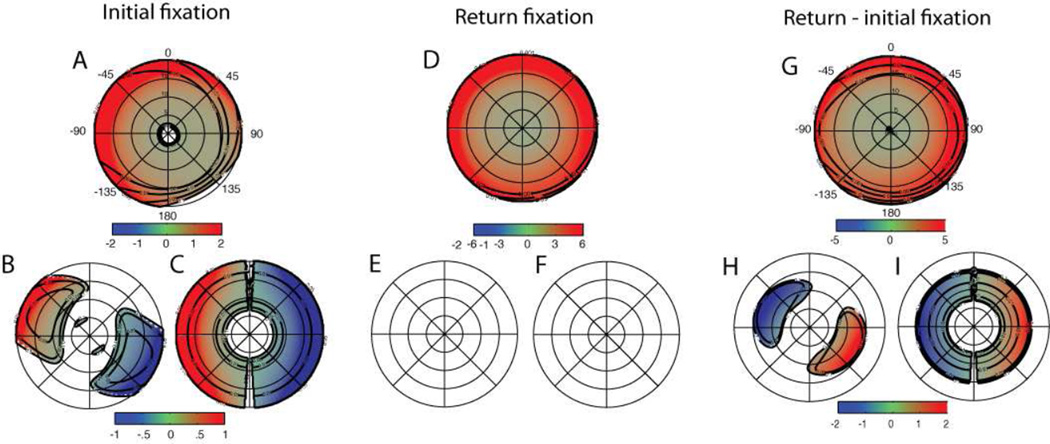Figure 6.
Target selectivity as a function of visual field for initial and return fixations. A. For initial fixations, target faces are more likely to be selected across the visual field. Both hemifield contrasts, comparing log odds ratios between points offset by 180° azimuth (B) and comparing points equidistant from either side of the vertical meridian (C) reveal greater target selectivity in the LVF. D. Return fixations similarly show uniformly positive target selectivity, however hemifield contrasts (E,F) reveal no evidence for hemifield differences (FDR Q > .22). G. As shown by the interaction term, selectivity is uniformly greater for return fixations compared to initial fixations across the visual field. Hemifield contrasts (H,I) reveal a relatively larger difference in the RVF implying that the difference of hemifield effects for target and distractor stimuli is significant. Color scales represent natural log units thresholded at FDR Q ≥ .1, and contours indicate FDR significance regions of .1, .05, .01, and .001. In panels D, C, H, I, the color scale represents the difference of log odds ratios between corresponding points of the hemifields.

